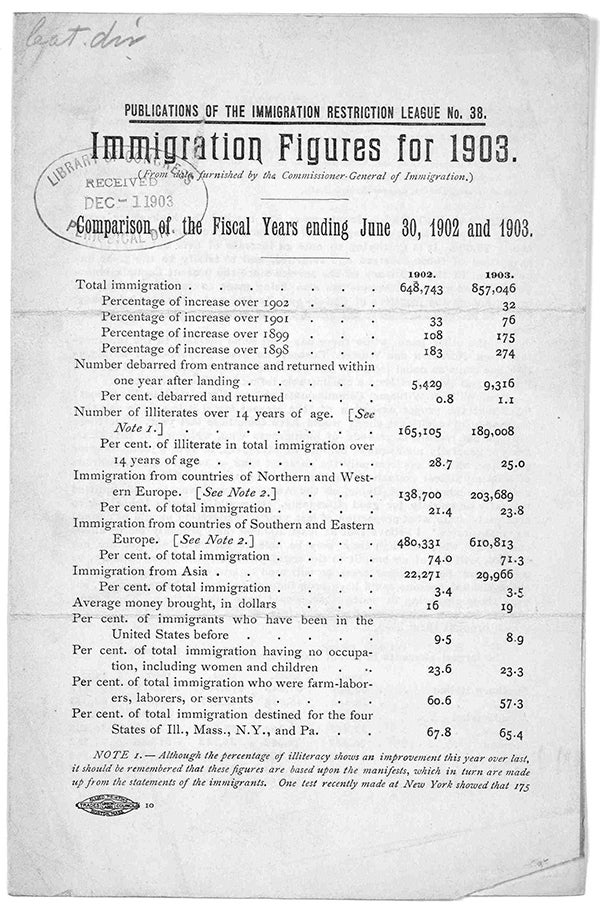Literacy and the immigration of "undesirables," 1903
A Spotlight on a Primary Source by Immigration Restriction League
 During the Progressive era, tens of millions of immigrants came to the United States from Europe to fulfill their American dream. During this period most came from southern and eastern Europe, particularly from Italy, Russia, and the Slavic countries. Many of the “new” immigrants came from poor regions and often had little formal education; literacy, therefore, became a benchmark for their acceptability as Americans.
During the Progressive era, tens of millions of immigrants came to the United States from Europe to fulfill their American dream. During this period most came from southern and eastern Europe, particularly from Italy, Russia, and the Slavic countries. Many of the “new” immigrants came from poor regions and often had little formal education; literacy, therefore, became a benchmark for their acceptability as Americans.
The Immigration Restriction League (IRL), founded by Harvard graduates and led by Prescott F. Hall, lobbied for stricter rules on immigration. In 1903, the IRL drew up a report to argue its case and identify those immigrants it deemed “undesirable,” as opposed to those “whose character and standards fit them to become citizens”:
[W]hile there has been some increase in the immigration from Northern and Western Europe, the great proportion of immigration has come as usual from the less desirable races of Southern and Eastern Europe, and there has been a considerable influx of illiterate Japanese.
William Williams, Commissioner at New York, is quoted as declaring that, as a result of this demographic shift,
at least 200,000 (and probably more) aliens came here who, although they may be able to earn a living, yet are not wanted, will be of no benefit to the country, and will, on the contrary, be a detriment, because their presence will tend to lower our standards.
In 1917, this influential lobbying group, with the help of powerful political allies, got Congress to pass a literacy test as part of the 1917 Immigration Act. The IRL essentially determined which ethnic groups had the “character and standards” worthy of acceptance in America.
